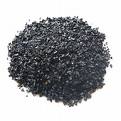DEPARTMENT OF CHEMICAL TECHNOLOGY OF WOOD
Profile of the Department:
nanobiotechnology
Activated carbon, also called activated charcoal or "Activated coal" is a form of carbon that has been processed to make it extremely porous and thus to have a very large surface area available for adsorption or chemical reactions.
The word activated in the name is sometimes replaced with active. Due to its high degree of microporosity, just one gram of activated carbon has a surface area in excess of 500 m2, as determined typically by nitrogen gas adsorption. Sufficient activation for useful applications may come solely from the high surface area, though further chemical treatment often enhances the absorbing properties of the material. Activated carbon is usually derived from charcoal.
Activated carbon is carbon produced from carbonaceous source materials like nutshells, peat, wood, lignite and coal and petroleum pitch. It can be produced by one of the following processes:
1. Physical reactivation: The precursor is developed into activated carbons using gases. This is generally done by using one or a combination of the following processes:
* Carbonization: Material with carbon content is pyrolyzed at temperatures in the range 600-900 °C, in absence of air (usually in inert atmosphere with gases like argon or nitrogen)
* Activation/Oxidation: Raw material or carbonised material is exposed to oxidizing atmospheres (carbon dioxide, oxygen, or steam) at temperatures above 250 °C, usually in the temperature range of 600-1200 °C.
2. Chemical activation: Prior to carbonization, the raw material is impregnated with certain chemicals. The chemical is typically an acid, strong base, or a salt (phosphoric acid, potassium hydroxide, sodium hydroxide, zinc chloride, respectively). Then, the raw material is carbonized at lower temperatures (450-900 °C). It is believed that the carbonization / activation step proceeds simultaneously with the chemical activation. This technique can be problematic in some cases, because, for example, zinc trace residues may remain in the end product. However, chemical activation is preferred over physical activation owing to the lower temperatures and shorter time needed for activating material.



